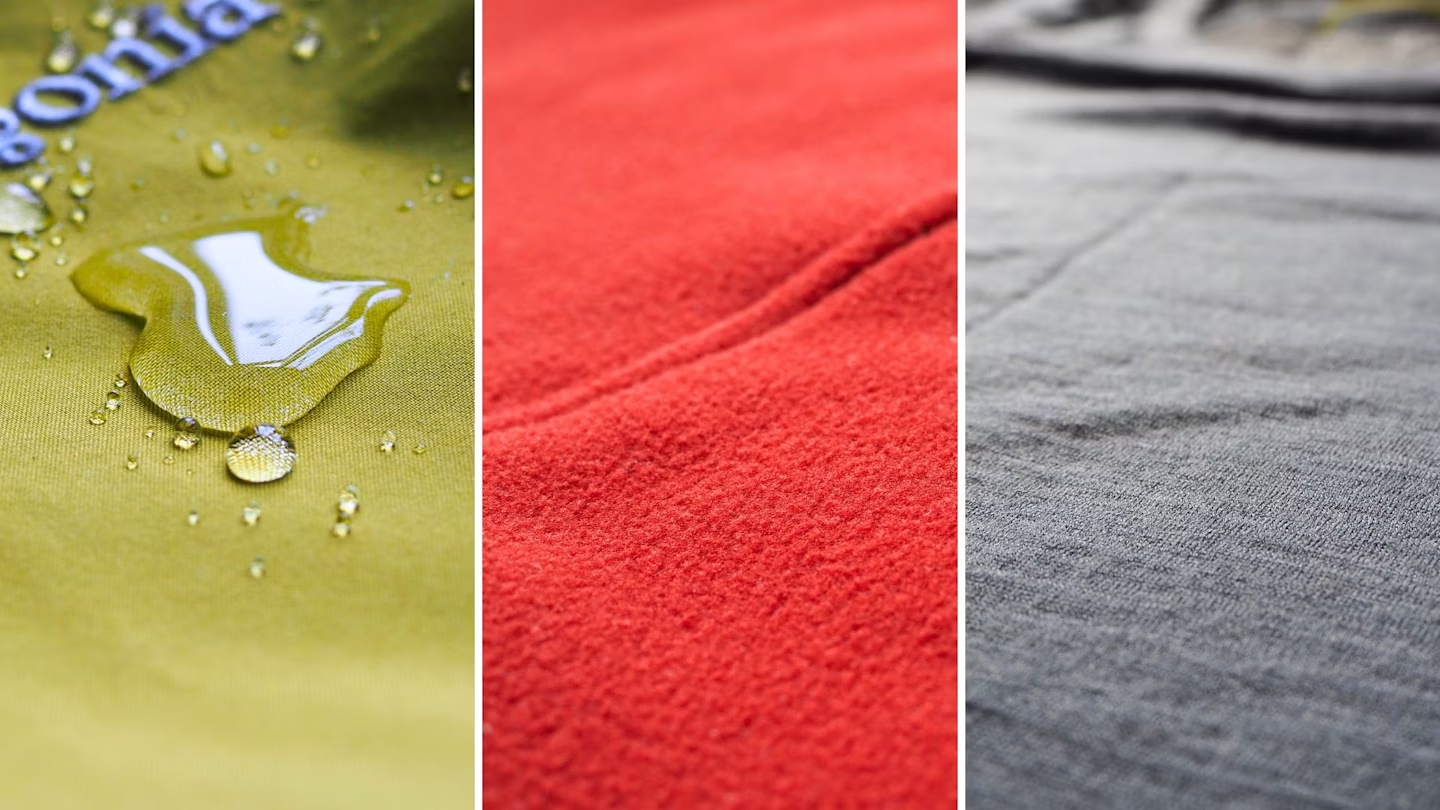Introduction: The Hidden Cost of Your Favorite Gear
You probably love your gear — that sleek smartphone, the hiking jacket that never lets you down, or your electric bike that zips through the city. But have you ever stopped to think about what it costs the planet for you to own and use them?
Every piece of gear — whether it’s a laptop, a backpack, or a surfboard — carries an invisible environmental price tag. From the raw materials that make it to the energy that powers it and the waste it leaves behind, our possessions are not just part of our lifestyle — they’re part of the planet’s story, too.
In this article, we’ll unpack the real environmental impact of our gear — across its entire lifecycle — and explore how smarter choices, better materials, and mindful habits can turn us from consumers into stewards of sustainability.
So buckle up — because the footprint of your gear goes a lot deeper than you might expect.
1. The Lifecycle of Gear: From Cradle to Grave
Before we can understand the environmental impact of our gear, we need to trace its entire journey — from birth to death. Sustainability experts call this the life cycle of a product, and it typically includes five key stages:
- Raw Material Extraction
- Manufacturing and Production
- Transportation and Distribution
- Use Phase
- End-of-Life Disposal
Let’s walk through each one — because every stage leaves its mark.
1.1. Raw Materials: Digging Deep Into the Earth
The story begins in mines, forests, and fields. Your carbon-fiber bike frame starts as petroleum-based resins and graphite fibers. Your smartphone’s shiny screen hides traces of rare-earth elements like neodymium and cobalt, often mined under grueling conditions with high ecological tolls.
Environmental costs of raw materials:
- Habitat destruction: Mining and logging clear forests and disrupt ecosystems.
- Water contamination: Heavy metals leach into rivers, poisoning aquatic life.
- Carbon emissions: Extraction and refining consume vast amounts of fossil fuels.
For instance, producing one ton of aluminum requires around 14 megawatt-hours of electricity — roughly what an average household uses in over a year.
The takeaway: The lighter, stronger, or smarter your gear claims to be, the more energy-intensive its raw materials probably are.
1.2. Manufacturing: Turning Resources Into Reality
Once materials are extracted, they’re transformed into usable components through complex industrial processes — smelting, weaving, molding, machining, and assembly.
Each process consumes energy, emits greenhouse gases, and generates waste. For example:
- Textiles require dyeing, which uses toxic chemicals and billions of liters of water.
- Electronics need clean-room environments and precise chemical treatments.
- Outdoor gear often includes synthetic polymers derived from oil.

In some cases, the manufacturing footprint exceeds that of the entire use phase. That means most of your gear’s environmental damage happens before you even touch it.
1.3. Transportation: The Journey of a Thousand Kilometers
Once your gear is made, it embarks on a world tour — from factory floors in Asia to warehouses in Europe, to your doorstep.
Each mile adds carbon. Cargo ships burn heavy fuel oil; planes consume jet fuel. A single smartphone may travel through five or six countries before reaching you.
The hidden irony? The lighter your gear, the more fuel-efficient it may seem — but the global logistics system behind it is far from light-footed.
1.4. The Use Phase: Power, Maintenance, and Longevity
Here’s where you come in. Using your gear also affects its footprint — through electricity consumption, maintenance products, and how often you replace it.
Electronics:
Your laptop might consume only 50 watts while running, but the cumulative energy over five years adds up — especially if you leave it plugged in 24/7.
Outdoor gear:
Your waterproof jacket needs washing and reproofing with chemical sprays, which can leach microplastics and toxins into waterways.
Sports equipment:
A surfboard or mountain bike doesn’t consume power, but maintaining it (lubricants, repairs, cleaning agents) still has a footprint.
The longer you keep your gear functional, the smaller its per-year environmental impact becomes. Durability is sustainability.
1.5. End-of-Life: The Afterlife of Things
Every product’s journey ends — and what happens next is critical.
- Landfill: The majority of gear ends up here, taking centuries to decompose.
- Recycling: Often limited, especially for mixed-material products like electronics.
- Recommerce and donation: Extends life but doesn’t eliminate the eventual waste.
Electronic waste is especially alarming. In 2024, the world generated over 60 million tons of e-waste — much of it containing toxic elements like lead and mercury. Only about 17% was properly recycled.
2. The Gear Categories: Comparing Their Footprints
Not all gear is created equal. Let’s break down the main categories and see how they compare environmentally.
2.1. Electronics: The Energy-Hungry Essentials
Your gadgets are marvels of engineering — and nightmares for sustainability.
Big issues:
- Mining rare-earth metals and lithium for batteries.
- Manufacturing emissions from chip fabrication.
- Short lifespans due to software obsolescence.
Tip:
Choose modular or repairable tech (like laptops with replaceable batteries). Opt for refurbished devices and use energy-efficient settings.
2.2. Clothing and Textiles: The Hidden Polluter
Fashion and outdoor gear have a massive environmental cost:
- The textile industry produces 10% of global carbon emissions.
- Polyester (a plastic fiber) sheds microplastics into waterways with every wash.
- Cotton, though natural, consumes immense amounts of water and pesticides.
Tip:
Look for recycled fibers, bluesign® or OEKO-TEX® certified fabrics, and brands that repair their products instead of encouraging replacements.
2.3. Transportation Gear: Bikes, Boards, and Beyond
Sustainable transport sounds great — but how sustainable is the gear itself?
Electric bikes:
Zero tailpipe emissions, but high manufacturing footprint (especially from lithium batteries).
Traditional bikes:
Aluminum and steel frames require energy to produce but last decades with proper care.
Surfboards and skateboards:
Often made of polyurethane foam and fiberglass — materials that are tough on the planet. Eco-alternatives now use plant-based resins and recycled cores.
Tip:
Buy quality once, maintain it well, and resist constant upgrades.
2.4. Adventure and Outdoor Equipment: Treading Lightly on the Wild
Ironically, the gear designed to explore nature often harms it.
- Tents, backpacks, and jackets rely on synthetic fabrics.
- Durable water-repellent (DWR) coatings use perfluorinated compounds (PFCs) — persistent pollutants linked to health issues.
- Lightweight carbon components are nearly impossible to recycle.
Tip:
Seek gear made from recycled nylon or polyester, PFC-free coatings, and modular designs. Patagonia, Vaude, and Fjällräven lead the way.
2.5. Home and Hobby Gear: The Subtle Sinkhole
From gym equipment to musical instruments, everything adds up. The environmental impact depends on:
- Material type (metal, wood, plastic).
- Manufacturing scale.
- Longevity and reuse potential.
A steel dumbbell might outlive you — a plastic one won’t.
A wooden guitar can be treasured for generations if crafted from sustainably harvested wood.
3. The Real Numbers: Quantifying the Footprint
It’s one thing to talk about impact — but let’s look at real data.
| Item | Carbon Footprint (kg CO₂e) | Key Impact Drivers |
|---|---|---|
| Smartphone | 60–80 | Manufacturing, mining, transport |
| Laptop | 200–350 | Production, chip fabrication |
| Synthetic jacket | 60–90 | Polyester, dyeing, shipping |
| Cotton T-shirt | 10–20 | Water use, farming, processing |
| Aluminum bicycle frame | 200–400 | Smelting, shaping |
| E-bike (battery included) | 800–1200 | Lithium-ion battery, electronics |
| Hiking boots (synthetic) | 40–50 | Rubber, synthetic leather, adhesives |
The pattern is clear: manufacturing dominates the footprint, often accounting for 60–80% of the total impact.
4. The Psychology of Gear: Why We Keep Buying
If we know our gear hurts the planet, why do we keep upgrading?
The Gear Acquisition Syndrome (GAS)
It’s real. The thrill of a new gadget or tool gives a dopamine rush. Marketers exploit this with limited editions, sleek aesthetics, and “must-have” features.
But the greener move is gear minimalism: choosing fewer, better, longer-lasting items that truly serve your purpose.
Identity and Status
Gear often signals who we are — or who we aspire to be. A minimalist hiker might pride themselves on a single durable backpack, while a tech enthusiast might chase every upgrade cycle.
Sustainability isn’t about rejecting identity — it’s about reshaping it around responsibility and longevity.
5. The Path to Lighter Footprints
Reducing the impact of your gear doesn’t mean giving up your passions or convenience. It’s about smart choices and mindful habits.
Let’s break down how.
5.1. Buy Smart, Not Fast
Ask yourself three questions before buying:
- Do I really need this item?
- Can I repair or upgrade what I already have?
- Is there a used version available?

Every new item avoided is a small act of rebellion against overproduction.
5.2. Choose Sustainable Materials
Seek out:
- Recycled aluminum, steel, or nylon.
- Organic cotton and hemp instead of conventional cotton.
- Biobased plastics or plant resins in boards and casings.
These materials cut emissions, conserve water, and reduce landfill waste.
5.3. Prioritize Repairability
A gear company’s ethics can often be measured by how easy it is to repair their products.
- Modular tech like Fairphone allows part replacement.
- Patagonia and Arc’teryx offer lifetime repair programs.
- iFixit provides free repair guides for countless devices.
Repair is the ultimate sustainability hack.
5.4. Extend Lifespan Through Maintenance
Regular cleaning, proper storage, and gentle use extend lifespan and reduce replacement frequency.
Oil your chains, re-waterproof your jacket, replace worn soles — small habits that multiply impact over time.
5.5. Embrace the Circular Economy
The future of gear isn’t ownership — it’s circulation.
- Rental programs: Gear-sharing platforms for cameras, outdoor gear, or musical instruments.
- Recommerce: Brands reselling refurbished items.
- Recycling loops: Companies reclaiming old materials to make new gear.
Every loop closed reduces the need for new resources.
5.6. The Power of Transparency
Support brands that disclose their supply chains, carbon data, and labor practices.
Transparency drives accountability — and helps you make choices that align with your values.
6. Case Studies: When Gear Goes Green
6.1. Patagonia’s Worn Wear
Patagonia’s Worn Wear program takes back used clothing, repairs it, and resells it. It’s a living example of how companies can profit without continuous production.
6.2. Fairphone
Fairphone produces modular smartphones designed to be repaired, upgraded, and recycled — proving that electronics don’t have to be disposable.
6.3. Vaude’s Circular Backpack
Vaude designed backpacks using mono-material construction (100% recycled polyester), making them easier to recycle and reducing waste.
6.4. Specialized’s Carbon Recycling
Bike company Specialized launched carbon fiber recycling initiatives, turning manufacturing scrap into new frames and parts.
Each of these examples shows one truth: sustainability doesn’t mean sacrifice — it means evolution.
7. The Future of Sustainable Gear
What’s next for eco-friendly equipment? Three revolutions are underway.
7.1. Bio-Based Materials
From mushroom leather to algae foam, bio-materials are redefining manufacturing. They’re renewable, biodegradable, and often carbon-neutral. Expect to see surfboards made from kelp and sneakers grown from fungi.
7.2. Energy-Positive Manufacturing
Factories are shifting to renewable energy, closed-loop water systems, and zero-waste policies.
Imagine a solar-powered 3D printing plant that uses only recycled feedstock — that’s the direction we’re heading.
7.3. Smart Design for Circularity
Future gear will be designed for disassembly. No glued layers or mixed polymers, just smart materials that snap apart for easy recycling or upgrading.
Circularity isn’t just about recycling — it’s about rethinking the entire lifecycle.
8. How You Can Make a Difference
Change starts with individuals. Here’s your action plan:
- Audit your gear. List what you own, what you actually use, and what you can sell or donate.
- Buy less, but better. Seek timeless, high-quality items.
- Repair before replacing. Learn simple fixes — it’s empowering.
- Power smartly. Unplug devices, use efficient chargers, and choose renewable energy where possible.
- Engage brands. Ask questions, demand transparency, and support sustainability innovators.
- Share knowledge. Inspire friends and communities to rethink consumption.
Small actions compound. A single person keeping their phone an extra two years can save 100 kilograms of CO₂. Multiply that by millions — and you have a global movement.
9. Conclusion: Gear Up for a Greener World
Every item you own has a story — not just of how you use it, but how it shapes the planet.
Your gear can either be a silent accomplice in environmental degradation or a proud testament to conscious living. The difference lies in your choices.
Sustainability isn’t about guilt — it’s about gratitude: gratitude for the materials the Earth provides, the craftsmanship of creation, and the opportunity to do better.
So next time you pick up a piece of gear, ask:
Where did this come from? What will happen when I’m done with it?
Because every answer you find — and every choice you make — leaves a footprint.
Make sure yours is one the Earth can live with.























